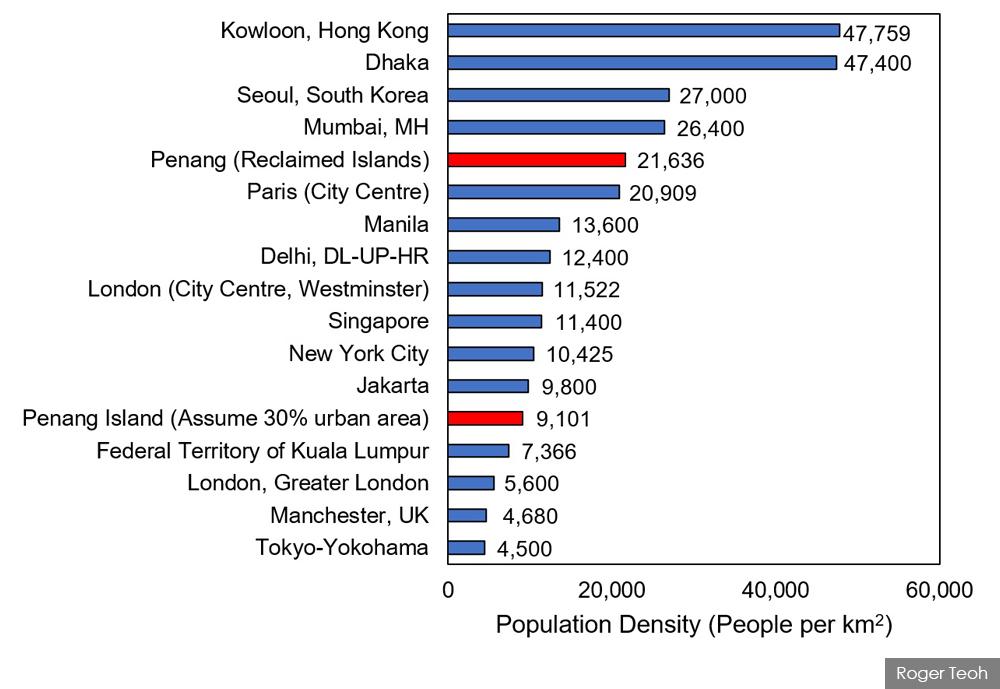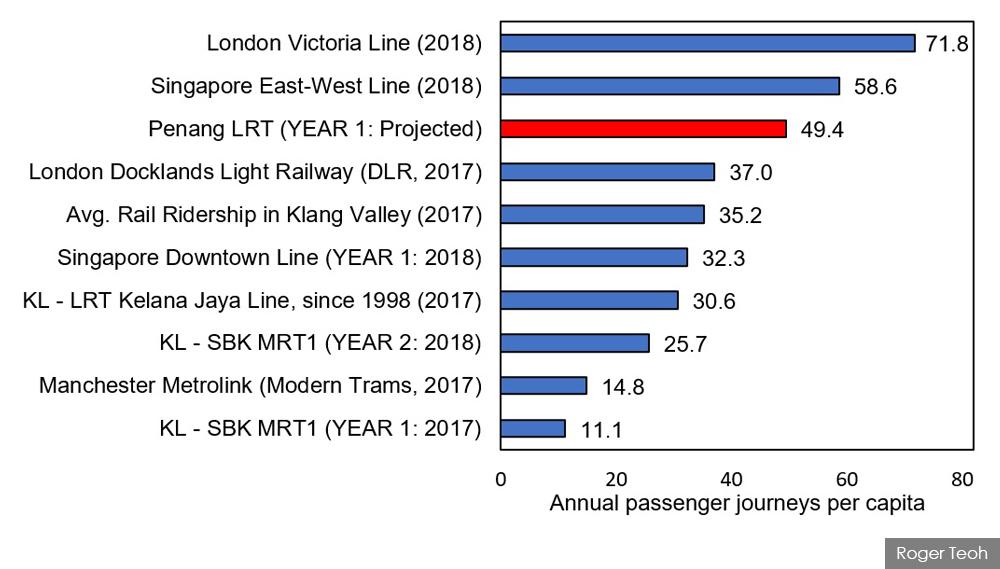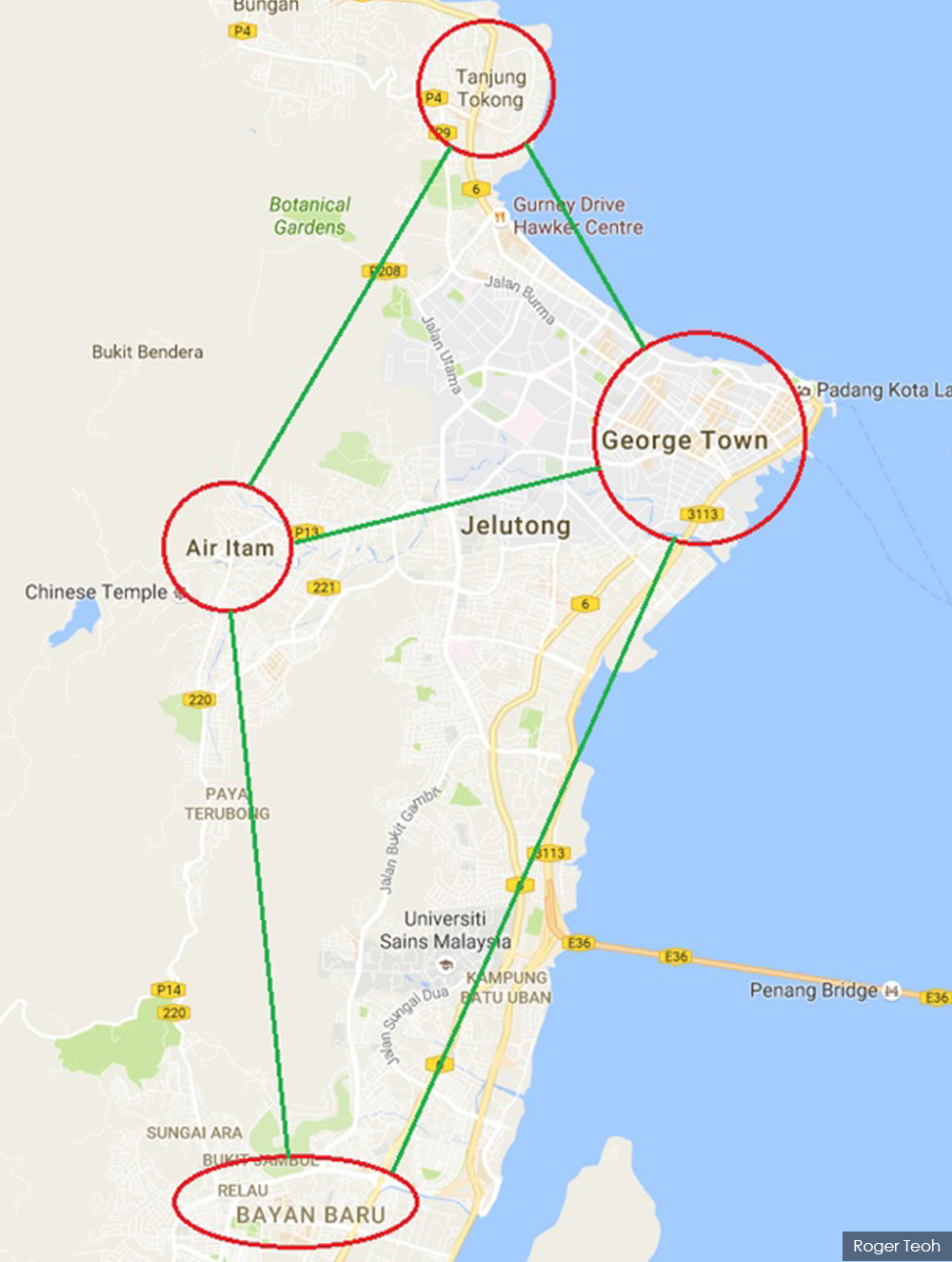COMMENT | Over the past three years, various concerns regarding the Penang Transport Master Plan (PTMP) have been raised.
However, the Penang government has not and is unlikely to provide evidence-based answers to clear the air. Instead, Penang Chief Minister Chow Kon Yeow continues to brush off various concerns raised by citizens and civil society.
This article compiles existing data and analysis that is freely available in the public domain to raise five highly critical statements on the PTMP that are backed by quantitative evidence.
High population density projections
The Penang South Reclamation (PSR) scheme has been pitched as a necessary project to fund the Pan Island Link 1 (PIL1) highway and the Penang LRT.
However, questionable population projections were used to justify that there will be sufficient demand for the sale of land in these reclaimed islands.
According to data from Chow’s media statement, the three reclaimed islands (with a land area of 16.98 sq km) is projected to have a population of 367,379 in the year 2030.
This translates to a population density of 21,636 people per sq km in the reclaimed islands, which will be higher than many metropolitan cities around the world.

Is this justifiable? What is so interesting in or around the reclaimed islands to the point that population density is projected to be higher than the city centres of London and Paris?
Why would 367,379 Penangites choose to squeeze themselves in these islands by 2030, when there are less dense areas available elsewhere in the state?
Cost of PIL1
The projected cost for the PIL1 highway, RM 9.6 billion, will make it one of the most expensive transport infrastructures in Malaysia.
Only the KL Sungai Buluh-Putrajaya (SSP) MRT2 (which serves a larger population base and involves a more complex construction environment in an urban conurbation) is more expensive in terms of the cost per km.
Shockingly, the cost per km for PIL1 is 56 percent higher than the KL-Singapore High-Speed rail (which has now been deferred due to high construction costs), and around 7.5 times higher relative to the revised price tag of the East Coast Rail Link (ECRL).
Even the Kinrara-Damansara Expressway (Kidex), which was said prior to its cancellation that it would be the most expensive highway in Malaysia, costs 67 percent lower on a per km basis.

While the federal government has reiterated its commitment to reduce the high debt levels of the country by scrapping or renegotiating projects inherited by the previous administration, Penang continues to spend lavishly without batting an eye.
Somehow, the rules set by Putrajaya do not apply to Penang, with calls for a holistic review of the feasibility of the PTMP continuing to fall on deaf ears.
Artificially inflated benefits of LRT
To make matters worse, a highly exaggerated annual ridership of 42 million trips within a year of the Penang LRT being operational is assumed, likely to artificially inflate the economic benefits and justify the RM9 billion construction cost.
To put this into perspective, this projected annual ridership is significantly higher than most MRT lines in London, Singapore and KL on a per capita basis.

For an absolute comparison, despite Kuala Lumpur having a larger population, the Sungai-Buloh Kajang (SBK) MRT only managed to achieve an annual ridership of 22.25 million (or 11.1 annual passenger journeys per capita) in its first year, 48 percent lower than the forecasted annual ridership for the Penang LRT.
Of course, the proposed LRT is great, but can Penang afford it? The financial viability of the LRT project and the state’s financial health could be threatened if a more realistic ridership projection is used.
Not only would the projected economic benefits would be significantly lower, the loss in ticket revenue could also cost at least RM120 million per year (equivalent to 24 percent of the estimated revenue for the Penang State Budget in 2019).
What about the opportunity costs of foregoing alternative public transport systems that are shown to be cheaper to build, operate and maintain, and could significantly expand the public transport catchment area?
Traffic congestion is here to stay
While more highways are expected to relieve traffic congestion between inter-urban trips (green lines in the figure below), local traffic problems within an urban area (red circles) will continue to worsen.

Transport studies have shown that a two-lane highway to a city centre typically adds around 10,000 additional vehicles a day to the surface streets, and around 80 percent of vehicular traffic in a city centre can be associated with drivers looking for a parking space.
However, due to land constraints, it is no longer feasible to expand local roads and parking spaces within urban centres in Penang to cater for the increased traffic from the PIL1.
Worse still, independent studies from local universities and NGOs have also estimated that free-flowing traffic in the PIL1 can only be maintained for around seven years after it is operational.
Beyond that, Penang is expected to return back to square one of experiencing worsening traffic congestion once again, despite spending RM 9.6 billion on a single highway which is clearly an expensive, inefficient and short-term solution.
While proponents of the PTMP will argue that I have neglected the potential benefits of the LRT in reducing traffic congestion, the next subsection will show that this benefit will be unlikely to materialise.
40pct public transport modal share target will be missed
There is irrefutable scientific evidence warning that an increase in the number of highways is strongly correlated to the increase in car modal share and dependence in a city.
Furthermore, relying on new public transport infrastructure in isolation (such as the LRT) in encouraging commuters to shift from cars to public transport only has a limited effect.
Phase one of the PTMP aims to construct only one 30km-long LRT line, but significantly more roads and highways (totalling 70km, including the PIL1, 3 Zenith paired roads, Gurney Expressway and undersea tunnel). This ignores the causal relationships in reducing the car modal share in a city.
Investments in public transport must be implemented in synergy with other policies (i.e., improving city walkability, station accessibility, public transport coverage and integration, and safety).
London, despite introducing various car restraint policies, such as congestion charging and removing road capacity, only managed to reduce its car modal share from 49 percent in 1995 to 37 percent in 2016. A car-dependent city such as Phoenix took 17 years to reduce its car modal share marginally from 94 percent in 1995 to 84 percent in 2012.
Given these case studies and the policy approaches outlined in PTMP, there appears to be a lack of political will from the Penang government to achieve its 40 percent public transport modal share target by 2030.
Modelling results suggest that, despite the high capital expenditure incurred by the LRT, the public transport modal share is likely to be in the range of 10 percent in 2030, only a marginal increase from current levels of 3.2 percent.
Considering the fact that road transport is responsible for 70 percent of all greenhouse gas emissions in a city, these policies are also in contradiction with the goal of reducing Malaysia’s carbon intensity by 35 percent by 2030, set by the Energy, Science, Technology, Environment and Climate Change Ministry.
A white elephant masterplan
On the whole, the quantitative evidence summarised in this article shows that the extremely high costs of the PTMP cannot be justified.
We are entering a dangerous precedent, especially when politicians can get away with ignoring hard scientific evidence in favour of rhetoric and the whims of certain interest groups.
Given the large sums involved, it is likely that the future government in power will no longer have the financial flexibility to turn things around should the PTMP run into financial trouble. There will be no turning back once the agreement is signed and work commenced.
ROGER TEOH is a PhD postgraduate studying at the Centre for Transport Studies, Imperial College London.
The views expressed here are those of the author/contributor and do not necessarily represent the views of Malaysiakini.

